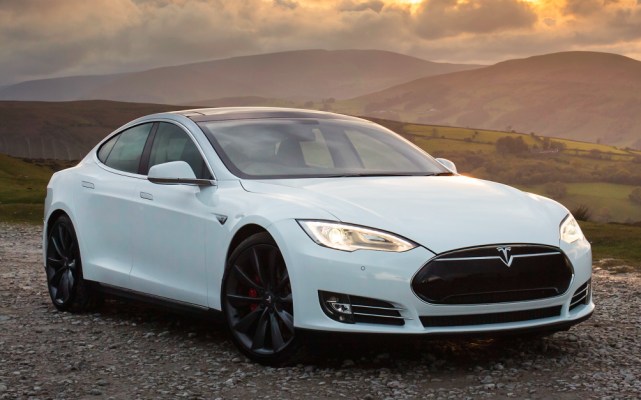Well, authorities in Hong Kong aren’t going to like this one bit. Back in November, they told Tesla to remotely disable its semiautonomous driving technology until they can confirm that the features, released in mid October, are safe. They were concerned (sort of understandably) by widely reported hijinks by drivers who were using Tesla’s new Autopilot software to shave and sit in the backseat of the car, among other things.
Tesla complied. That doesn’t mean the company isn’t moving forward at full speed, though. Today, it released version 7.1 of its software for the Model S and X that includes a “Summon” feature that enables the car to drive itself without anyone inside.
More specifically, using their key fob, Tesla owners can now direct their cars to park themselves in a spot within 39 feet, and to drive themselves into and out of their parking garages.
In a nod to safety concerns, the company has also now restricted its Autosteer technology on residential roads and roads without a center divider. When Autosteer is engaged on a restricted road, Model S’s speed will be limited to the speed limit of the road, plus an additional 5 mph.
The site Electrek was first to publish the news. Tesla says the following in its release notes for v7.1:
Autosteer is now restricted on residential roads and roads without a center divider. When Autosteer is engaged on a restricted road, Model S’s speed will be limited to the speed limit of the road plus an additional 5 mph. When entering such a restricted road, Model S will reduce its speed if necessary and will do so even if you increase the cruise control set speed.
Tesla says that Autosteer’s lane keeping has been improved near highway exits and when the lane markings are faded.
Autopark features in the Tesla Model S have been updated with a ‘beta’ version of its Summon feature as well. Here’s how it works:
To prepare to park your vehicle, align Model S within 33 feet of the final parking space so Model S can move straight into the space in either Drive or Reverse. With Model S in Park, stand within 10 feet of the vehicle and press and hold the center button on your key fob until the hazard lights flash continuously. While the hazard lights are flashing, press the frunk button once on the key fob to drive Model S forward into the parking space or the trunk button once on the key fob to back Model S into the parking space. Model S will move up to 33 feet or until the sensors detect an obstacle, at which point parking is considered completed and Autopark will shift the car to Park. Repeat the process above to use Summon to exit a parking spot remotely.
You can cancel the procedure by tapping the center button on the key fob. If you’ve set up your Model S with Homelink, it will open and close garage doors for you as well.
Back at an October press briefing, when Tesla’s last software update enabled cars to steer, change lanes, and park on their own, Tesla CEO Elon Musk had said he envisioned fully driverless cars.
He said then that while its still “important to exercise great caution at this early stage,” in the long term, he added, “people will not need hands on the wheel — and eventually there won’t be wheels and pedals.”
For now, the wheels and pedals remain. For the beginning and end of the drive, however, the humans are now optional.
You can check out video of the Summon feature in action here, courtesy of an undoubtedly excited Tesla owner:
Article updated with additional details on Autosteer and Summon features in version 7.1 of the Model S software.
